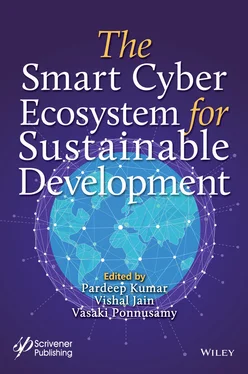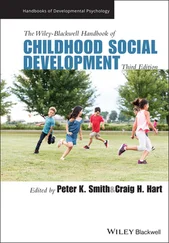56. Sanguanpuak, T., Guruacharya, S., Rajatheva, N., Bennis, M., Latva-Aho, M., Multioperator spectrum sharing for small cell networks: A matching game perspective. IEEE Trans. Wireless Commun ., 16, 3761–3774, 2017.
57. Grimaldi, S., Mahmood, A., Gidlund, M., An SVM-based method for classification of external interference in industrial wireless sensor and actuator networks. J. Sens. Actuator Networks , 6, 9, 2017. https://doi.org/10.3390/jsan6020009
58. Kulin, M., Kazaz, T., Moerman, I., Poorter, E., End-to-end learning from spectrum data: a deep learning approach for wireless signal identification in spectrum monitoring applications. IEEE Access , 6, 18484–18501, 2018.
59. Youssef, K., Bouchard, L., Haigh, K., Krovi, H., Silovsky, J., Valk, C., Machine learning approach to RF transmitter identification. IEEE J. Radio Freq. Identif ., 2, 197–205, 2018.
60. Davaslioglu, K., Soltani, S., Erpek, T., Sagduyu, Y., DeepWiFi: Cognitive WiFi with Deep Learning. IEEE Trans. Mobile Comput ., 20, 429–444 2019.
61. Jeunen, O., Bosch, P., Herwegen, M., Doorselaer, K., Godman, N., Latre, S., A machine learning approach for ieee 802.11 channel allocation. 14th International Conference on Network and Service Management (CNSM) , pp. 28–36, 2018.
62. Baid, A. and D. Raychaudhuri, D., Understanding channel selection dynamics in dense Wi-Fi networks. IEEE Commun. Mag ., 53, 110–117, 2015.
63. Herzen, J., Lundgren, H., Hegde, N., Learning Wi-Fi Performance. 12th Annual International Conference on Sensing, Communication, and Networking (SECON) , IEEE, 2015.
64. Sui, K., Zhou, M., Liu, D., Ma, M., Pei, D., Zhao, Y., Li, Z., Moscibroda, T., Characterizing and Improving WiFi Latency in Large-Scale Operational Networks. The 14th ACM International Conference on Mobile Systems, Applications, and Services , ACM, 2016.
65. Coronado, E., Thomas, A., Riggio, R., Adaptive ML-Based Frame Length Optimization in Enterprise SD-WLANs. J. Network Syst. Manage ., Springer, 28, 850–881, 2020.
66. Ibarrola, E., Davis, M., Voisin, C., Close, C., Cristobo, L., QoE Enhancement in Next Generation Wireless Ecosystems: A Machine Learning Approach. IEEE Commun. Stand. Mag ., 3, 63–70, 2019.
67. Košťál, K., Bencel, R., Ries, M., Trúchly, P., Kotuliak, I., High Performance SDN WLAN Architecture. Sensors , 29, 8, 1880, 8, 2019.
68. Wang, Z., Xu, Y., Li, L., Tian, H., Cui, S., Handover control in wireless systems via asynchronous multi-user deep reinforcement learning. IEEE Internet Things J ., IEEE, 5, 4296–4307, 2018.
69. Sequeira, L., Cruz, J., Ruiz-Mas, J., Saldana, J., Fernandez-Navajas, J., Almodovar, J., Building an SDN enterprise WLAN based on virtual APs. IEEE Commun. Lett ., 21, 374–377, 2017.
70. Kumar, V., Kandpal, D.C., Jain, M., Gangopadhyay, R., Debnath, S., K-mean clustering based cooperative spectrum sensing in generalized fading channels. Twenty Second National Conference on Communication (NCC) , IEEE, pp. 1–5, 2016.
71. Lu, Y., Zhu, P., Wang, D., Fattouche, M., Machine learning techniques with probability vector for cooperative spectrum sensing in cognitive radio networks. IEEE Wireless Communications and Networking Conference , IEEE, pp. 1–6, 2016.
72. Sobabe, G., Song, Y., Bai, X., Guo, B., A cooperative spectrum sensing algorithm based on unsupervised learning. 10th International Congress on Image and Signal Processing, BioMedical Engineering and Informatics (CISP-BMEI) , IEEE, pp. 1–6, 2017.
73. Wang, Y., Zhang, Y., Wan, P., Zhang, S., Yang, J., A spectrum sensing method based on empirical mode decomposition and k-means clustering algorithm. Wireless Commun. Mobile Comput ., 2018, Article ID 6104502, 10, 2018.
74. Zhang, S., Wang, Y., Li, J., Wan, P., Zhang, Y., Li, N., A cooperative spectrum sensing method based on information geometry and fuzzy c-means clustering algorithm. EURASIP J. Wireless Commun. Networking , 17, 2019, 2019.
75. Hassan, Y., El-Tarhuni, M., Assaleh, K., Learning-based spectrum sensing for cognitive radio systems. J. Comput. Networks Commun ., 13, 2012, 2012.
76. Ahmad, H., Ensemble classifier based spectrum sensing in cognitive radio networks. Wireless Commun. Mobile Comput ., 2019, 16, 2019.
77. Huang, X., Hu, F., Wu, J., Chen, H., Wang, G., Jiang, T., Intelligent cooperative spectrum sensing via hierarchical dirichlet process in cognitive radio networks. IEEE J. Sel. Areas Commun ., 33, 771–787, 2015.
78. Liu, B., Li, Z., Si, J., Zhou, F., Blind continuous hidden markov model-based spectrum sensing and recognition for primary user with multiple power levels. IET Commun ., 9, 1396–1403, 2015.
79. Paul, A. and Maity, S., Kernel fuzzy c-means clustering on energy detection based cooperative spectrum sensing. Digital Commun. Networks , 2, 196–205, 2016.
80. Awe, O. and Lambotharan, S., Cooperative spectrum sensing in cognitive radio networks using multi-class support vector machine algorithms. 9th International Conference on Signal Processing and Communication Systems (ICSPCS) , IEEE, pp. 1–7, 2015.
81. Xu, Y., Cheng, P., Chen, Z., Li, Y., Vucetic, B., Mobile collaborative spectrum sensing for heterogeneous networks: A bayesian machine learning approach. IEEE Trans. Signal Process ., 66, 5634–5647, 2018.
1 Email: murads@ppu.edu
3
An Overview on Internet of Things (IoT) Segments and Technologies
Amarjit Singh
Jalandhar, Punjab, India
Abstract
The concept of IoT refers to the Internet of Things that can involve internet activity. But this can be done using the internetworking concept and aim to data information transfer. In other words, IoT can process for sharing information between virtual and system interaction. Using the IoT, it fetches the information using the sensors and other objects [1]. As one can with little of a stretch imagine, any certified duty to the improvement of the IoT ought to result from synergetic activities drove in different fields of data, for instance, communicate correspondences, informatics, contraptions, and human science. In such a capricious circumstance, it organizes this investigation to the people who need to advance toward this baffling train and add to its unforeseen development. It represents original dreams of this IoT perspective for enabling advances tested. What rises is that despite everything, significant issues will be confronted. This research paper includes the understanding of IoT and its different approaches.
Keywords :IoT, networking, sensors, wireless communication, sensor networks
Internet of Things (IoT) could be characterized assortment that is the internet; it is characterized as systems of systems that can associate millions of clients with a few typical internet conventions [2]. In IoT, the urban areas can be constructed where it manages with the parking spots, lighting, water system offices, commotion, and burn through, which can be checked continuously applications. We can fabricate keen homes that are extremely sheltered and progressively proficient to live. We can fabricate savvy conditions that can naturally be checking the contamination from air and water and empowering the early recognition of Tsunami, tremors, backwoods fires, and many annihilating debacles in the earth. A few modern, normalization, and study bodies engaged with the action of the development of answers to mollify the featured innovative prerequisites. This overview gives an image of the present cutting edge on the IoT [3]. IoT assumed expresses to a combine of extra problems about the framework’s body outlooks. Low resources will depict the things framing the IoT to the amount of together estimation and essential limit. The future progressions of action need to give outstanding assumed to affirm adequacy additional than the understandable adaptability issues (Figures 3.1 and 3.2).
Читать дальше












